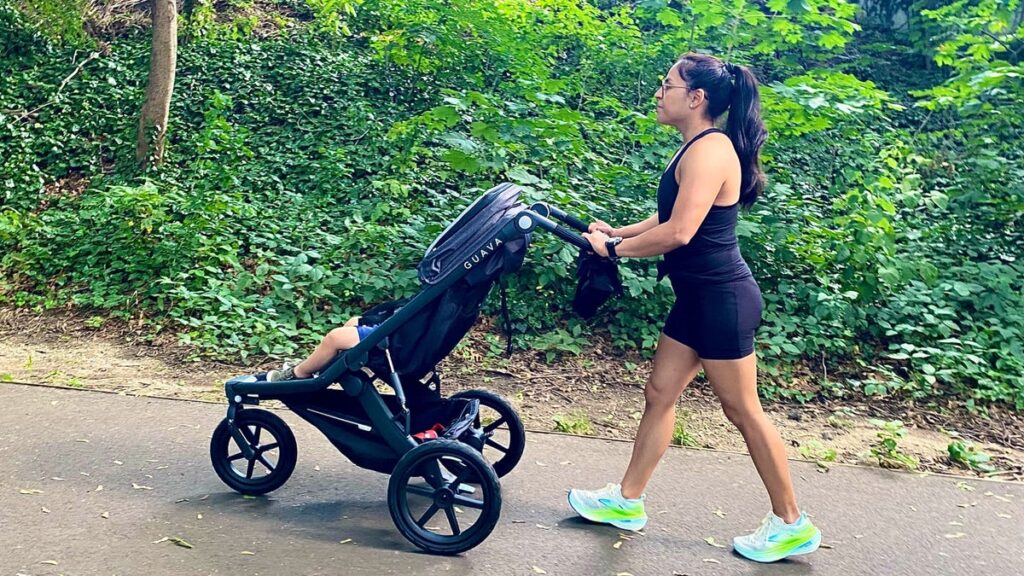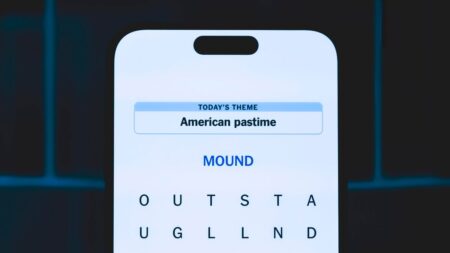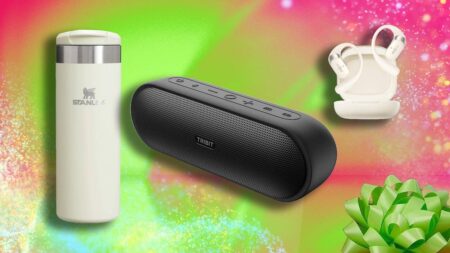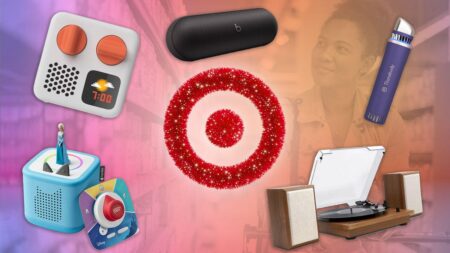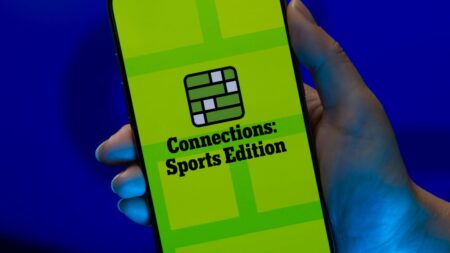As an active mom, I enjoy doing a variety of activities to stay fit. I lift weights to get stronger (carrying a toddler around challenges your overall strength), go for walks to clear my mind, run to get my heart rate up and take a fitness class here and there.
Before having my son, I completed my first marathon, several half-marathons and shorter races in between. But running took a backseat after my second trimester because I was advised not to do activity in the summer heat while heavily pregnant.
It’s been about two years since then, and I’m ready to start running consistently. Still, finding the time to run outdoors has been a challenge. Though I’m able to squeeze in workouts at home during the week, having a child means working around his schedule and needing someone to watch him if I go out for “me time.”
That’s when I realized this season might not be about running alone, but including my son in my adventures instead. A jogging stroller was one tool to help me reach my running goals without having to worry about childcare. I got to test the Guava Roam jogging stroller, and it’s made all the difference.
The Guava Roam jogging stroller experience
The Guava Roam jogging stroller is compact enough to fit in a small apartment. One of my concerns about a jogging stroller was that they tend to be huge, and I don’t have much storage space. But the Roam folds in half with a pull of a handle and is 50% smaller than the average jogging stroller folded up.
It opens as easily as it closes and only requires turning the knob (to make sure the front wheel is unlocked) and adjusting the handle. The back of the stroller also has the traditional lock and unlock mechanism on the left and right sides that you can press down with your foot.
The three airless tires on this stroller (two in the back, one in the front) are designed to handle different terrain, whether you’re walking on the pavement or jogging on a dirt road. I’ve pushed this stroller over smooth and uneven trails with tree branches, and these tires can handle it.
It can hold a child up to 60 pounds or as young as 6 months old. By 6 months, babies have developed enough neck and head control to withstand the jogging stroller movement.
A side-by-side look at the Guava Roam and Uppa Vista stroller. The Guava is smaller than the Vista folded in half, and takes up less space.
The Roam made it easy to secure my son, and even has a hood that I could pull down during sunny days. The stroller’s adjustable handles felt ideal for me as a short woman. However, my husband struggled sometimes finding the right handle height because it doesn’t offer too many adjustment options if you’re on the taller side.
The extra pockets in the back of the stroller and the parent organizer, an attachment included in the Roam Everyday Essentials Set that secures to the handle and holds your water bottle and phone, are helpful for carrying extra items.
Jogging using the Guava Roam stroller and the Amazfit Balance 2 smartwatch
As a jogging stroller newbie, I appreciated how easy it was to adapt to using the Guava Roam, even while pushing a 26-pound toddler.
I’d never run with a jogging stroller before this, so I had no idea how easy or complicated it would be. I knew certain techniques were recommended, like remaining upright, keeping the core engaged and alternating arms every 30 seconds or so, with the free arm swinging, to avoid overuse.
I’m not going to lie — pushing extra weight, let alone running, is a challenge. But it was a way for me to bond with my son and get fresh air while rebuilding my running endurance.
As someone who is naturally competitive with herself, I learned very quickly that I had to cut back on my speed expectations when running with a jogging stroller. I normally use the Apple Watch to track my runs, but in this case, I started experimenting with the Amazfit Balance 2 smartwatch to see how it differed.
The Amazfit watch face is bigger than an Apple Watch, but the font is a little smaller, so it made it harder for me to focus much on my speed. Instead, I felt more inclined to go based on feel, which was helpful as I jumped back into the sport.
The Amazfit Balance 2 has 170 workout modes ranging from running, cycling, strength training, HYROX training and more.
Usually, when I run on my own, I jog to slow down. However, with a jogging stroller, I took more walking breaks. I also found myself stopping to check on my son and making sure he was hydrated, had a snack in hand or was properly strapped in. If I were training for a race and had a specific goal in mind, I could see myself using a jogging stroller for easy recovery runs.
How I used a smartwatch and apps with a jogging stroller
Although I haven’t targeted distances longer than 3 or 4 miles recently, using the Amazfit Balance 2 Watch along with the Strava app (my favorite workout app for running), and occasionally the Apple Watch, gave me an idea of where I was fitness-wise, compared to the past.
One advantage of the Apple Watch over Amazfit is that it lets you connect to third-party apps like Spotify (to play music) and Strava (to track your runs). Amazfit has an app (the Zepp app) and the option for you to upload your own music. But that seems tedious when compared with connecting to a third-party app on your smartwatch instead. I had to control my music and the Strava app through my phone, which isn’t always convenient, and I’d prefer to control these features through my watch during a run.
I also didn’t love how easily the scratch-proof screen smudged on the Amazfit Balance 2, but that’s probably because I’m used to how smudge-proof Apple Watches are.
I liked how sleek the Amazfit Balance 2 looked on my arm. It also offers lots of apps within the watch (like your workout history, weather, readiness score, blood oxygen levels, step count, stress, sleep, and more) and 170 workout modes. I haven’t had a chance to explore all of them yet, but they were easy to customize and view through the watch.
The battery life is also impressive since it can be used for 21 days before needing a recharge. This smartwatch is an affordable option compared to other wearables like the Apple Watch or Garmin, priced under $300.
I also wanted to compare the accuracy of the Amazfit Balance 2 to my Apple Watch. I’d previously done this when testing smart rings to see how the data compared at the end of a run.
I trusted my Apple Watch because it’s been pretty accurate in all the years I’ve used it, but I noticed that the Zepp app had entirely different paces collected from the Amazfit watch compared to those uploaded into Strava. I also noticed Amazfit sometimes gave me paces that didn’t match the ones my Apple Watch recorded, which could be from a 3-second lag when trying to start the watches at the same time.
For example, on one of my runs, the Apple Watch read my average pace as 8:56/miles, and the Amazfit read it as 8:55/miles, which doesn’t seem like a huge difference. However, when I looked at the pace per mile side-by-side, the timing is off by five or more seconds. If pacing isn’t something you’re concerned about, this shouldn’t matter. But if you’re working on improving your pacing or establishing a pace, you may want to test a few smartwatches to get the most accurate results.
The slight discrepancies between the Amazfit Balance 2 and Apple Watch as recorded by the Strava app.
One of the cool features of the Zepp app, which collects the data from the Amazfit Balance 2 Watch during a run, is that it shows your heart rate zones in an easy-to-read format. Another feature I liked was gradient distribution, which tells you what percentage of your run was uphill, flat or downhill. This could be helpful if you’re training for hilly races and want to practice on similar terrain.
Other data under the Zepp app could help athletes if they have a coach who needs more information on their fitness stats. You can find cadence, stride, running power-to-weight ratio (the force and speed you generate while running), ground contact time (how much time your foot remains in contact with the ground every step), vertical oscillation (to determine how efficiently you’re using their energy with your stride) and how well your body uses aerobic and anaerobic training. It also compares your current and previous performances.
Despite the discrepancies between the two watches, I liked being able to use this recorded information to compare my pace with and without my jogging stroller. Knowing how much I could or couldn’t handle helped me focus on not overdoing it, and it also made me feel more motivated to give it my all when I was running solo.
Having more variety in how I run has improved my endurance and speed over time. In the middle of testing, I had a fitness and wellness assessment done through Eternal, a healthcare platform for athletes. The aerobic exam tested my VO2 max, among other things. I learned that I had a strong aerobic profile, which placed me in the 95th percentile for performers in my age and gender, and which means my body is primed to take on an endurance goal (if I decide to run a race in the near future).
Running goals, two years postpartum
I’ve been out of the postpartum trenches for a while now, although it seems never-ending, and I’ve been looking forward to setting personal goals. Prior to motherhood, I would set fitness benchmarks and aim to achieve them in that same year. The last time I ran a long-distance race was a half-marathon in 2021, so I’m feeling the itch again.
We’ll see where this year takes me. In the meantime, going for a run with a jogging stroller (in addition to my strength-training workouts) has been helpful for clearing my head, spending quality time with my son and improving my endurance.
Read the full article here







